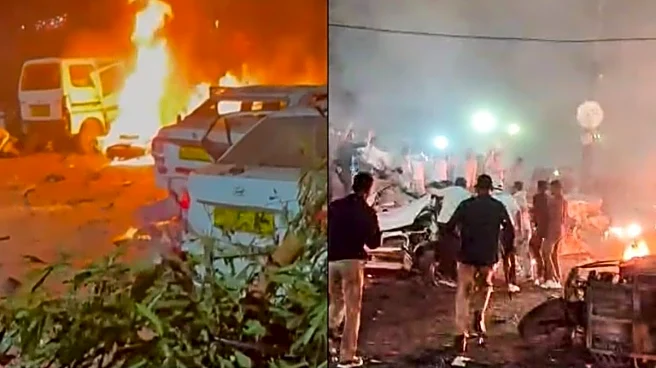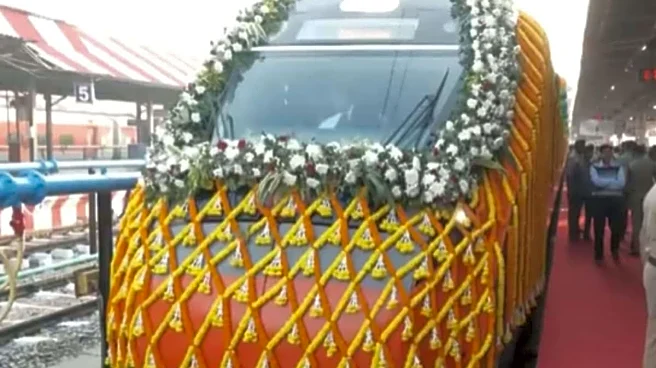Uttar Pradesh—home to some of India’s most revered religious centres—has gone on high alert. From the temple town of Ayodhya to the ghats of Varanasi and the confluence of Prayagraj, authorities have placed these zones under multi-layered security cover after intelligence agencies marked them as “priority-sensitive”.
Following the Delhi blast, the state’s top policing apparatus flagged these three sacred hotspots for immediate extra vigilance. Uttar Pradesh ADG (Law and Order) Amitabh Yash said that the DGP has issued instructions to all senior officials across the state to enhance security at religious sites, sensitive districts, and border areas. “All security agencies have been alerted,” he said, adding that coordination between district police,
ATS, and intelligence units has been strengthened.
In Ayodhya, the mood is a mixture of faith and a quietly guarded vigilance. At the entrance to the Ram Janmabhoomi complex, senior police and security staff, including IG Range Pravin Kumar, conducted ground inspections at Lata Mangeshkar Chowk and the Tedhi Bazaar entry. Vehicles were checked personally by officers, drivers questioned, and parked motorcycles examined for suspicious material. Instructions were issued to ensure that security is reinforced without causing inconvenience to devotees.
In Varanasi, the temple city is under a tight vigil. Police Commissioner Mohit Aggarwal himself led the checking drive, overseeing the enhanced arrangements at the railway station, bus termini, and the airport. The security ring around the Kashi Vishwanath temple and the ghats has been expanded. Drone patrols have been intensified, barricades have been placed on approach roads, and police teams are on round-the-clock patrols near high-footfall zones.
Prayagraj—the city of the confluence—is also under watch. PAC units, ATS personnel, and local intelligence teams are operating jointly to maintain a constant security presence near the Sangam, major temples, and riverfront areas. Entry routes have been fortified with traffic diversions and barricades, while anti-sabotage squads continue to scan sensitive pockets in the early hours and before evening aartis.
Across these sacred corridors, surveillance has been tightened to an unprecedented level. Police say the “multi-layered” system involves drone reconnaissance over temple domes and ghats, live camera monitoring from control rooms, and physical checkpoints manned by PAC and local police at short intervals. Every vehicle entering temple precincts is being screened, and passengers are being asked for identification at random. Roadblocks have been installed near crowded markets and pilgrim routes to prevent unmonitored vehicle movement. Anti-sabotage squads are sweeping parked motorcycles and unattended baggage, while plainclothes officers mingle with crowds to spot unusual behaviour. A close coordination mechanism between district police, ATS, and the local intelligence unit ensures that every alert—no matter how small—is immediately verified. Temple security committees, priests, and district administration officials have been told to maintain continuous communication and report any irregularity without delay.
At the ground level, the tight security is palpable but not overbearing. “We have increased frisk-points and are verifying IDs of vehicles entering the temple campus,” said a temple security official in Ayodhya. “Our aim is to ensure worship goes on without disruption but in safe surroundings.”
A devotee at Varanasi’s Kashi Vishwanath temple echoed that feeling: “Faith is stronger than fear. The lines are longer because of checking, but people understand it’s for everyone’s safety.”
A priest at Prayagraj’s ghats summed up the mood: “The Ganga and Yamuna have seen everything—devotion and danger alike. We are cautious but calm.”
The emotional undercurrent across these cities is clear—faith remains unshaken even as vigilance dominates the streets. Devotees continue to arrive, offering prayers and lighting lamps, their trust undeterred by the sight of rifles and metal detectors. For the police, it’s a delicate balance between facilitating worship and ensuring no lapse in safety.
Historically, Ayodhya, Varanasi, and Prayagraj have been the spiritual heartbeat of India. Yet their sanctity also demands the highest vigilance whenever national security is at stake.



/images/ppid_a911dc6a-image-176257643795098485.webp)

/images/ppid_59c68470-image-176267003922921072.webp)



/images/ppid_a911dc6a-image-176276242854317596.webp)



/images/ppid_a911dc6a-image-176276109908310526.webp)
/images/ppid_a911dc6a-image-176268822535453325.webp)

/images/ppid_59c68470-image-176257768446059412.webp)